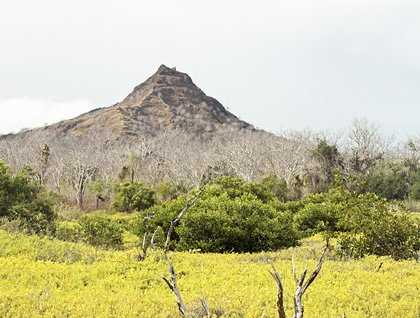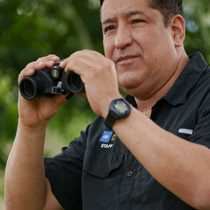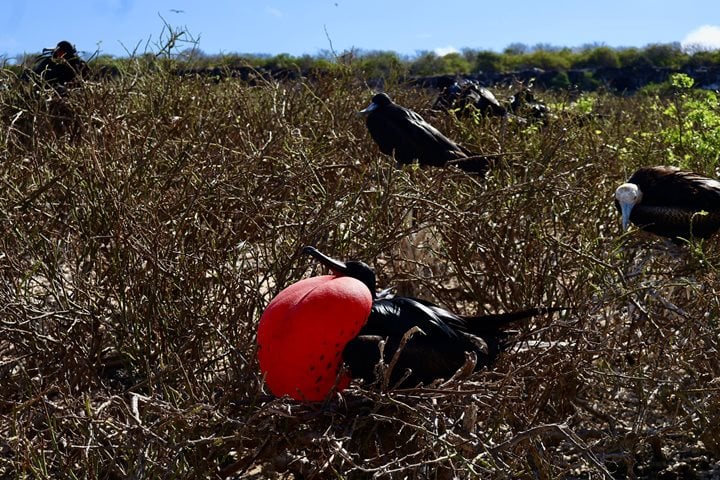Today we all woke up with high spirits and hopes. This day in our expedition found us anchored in front of Cerro Dragon, a visitors’ site located on the northwestern side of Santa Cruz Island. Cerro Dragon, Spanish for Dragon’s Hill, is famous for the healthy and abundant population of Galápagos land iguanas that live there.
After breakfast, early in the morning so as to avoid the heat of midday, we went for a hike looking for these dragon-like iguanas. We were successful, for we encountered several colorful individuals that were observed contentedly resting underneath prickly pear cacti, or dozing in the equatorial sun. We all got remarkably close-up looks at these amazing iguana profiles. Further along the trail, we spotted several flamingoes as well in a small brackish lagoon. These beautiful birds were hectically moving their beaks through the shallow water, looking for food.
Our guests were very surprised to see the very arid scenery that dominated this area as well. This dry landscape was very different from the lash vegetation we observed yesterday, even though we were on the same island and at about the same altitude in the littoral zone. In Galápagos, this natural phenomenon occurs because of the strong southwestern winds that affect the southern slopes of most of the islands of the archipelago.
In the late morning, we snorkeled over to the nearby islets known as Guy Fawkes. There we found a huge underwater wall that teems with incredibly rich life, including Galápagos sea lions, many colorful invertebrates, and even a solitary Galapagos penguin. Many reef fish species were seen as well. We certainly enjoyed a gentle swell pulling us towards and away from the cliff face.
In the afternoon, we sailed south to a lovely stretch of the eastern shore of Santa Cruz known as “El Eden”, where we spent the early afternoon taking Zodiac rides. Kids and teenagers were also offered the opportunity to learn how to drive a Zodiac—what a thrill!
At the end of this great day, we went to the ship’s bow, in front of the bridge area, for a complimentary wine tasting as we circumnavigated Daphne Major. This small island is of great scientific interest, for a famous couple of scientists, Peter and Rosemary Grant, have been studying Darwin finches at this site for most of their lives. They discovered, in a nutshell, that the size of beaks of these iconic birds can change in short periods of time, adapting to drastic weather and availability of food on the island. This revolutionary study showed that evolution can take place not only in millions of years, but also in extremely short time periods. A classic science divulgation book by famous writer Jonathan Wiener entitled “The Beak of the Finch” beautifully narrates this extraordinary discovery and decades of life of the Grants on Daphne Major.
A breathtaking sunset around Daphne Major was the golden finale for a great adventurous day around this paradise. Our expedition will continue tomorrow, and we can hardly wait to see what lies in store for us.









